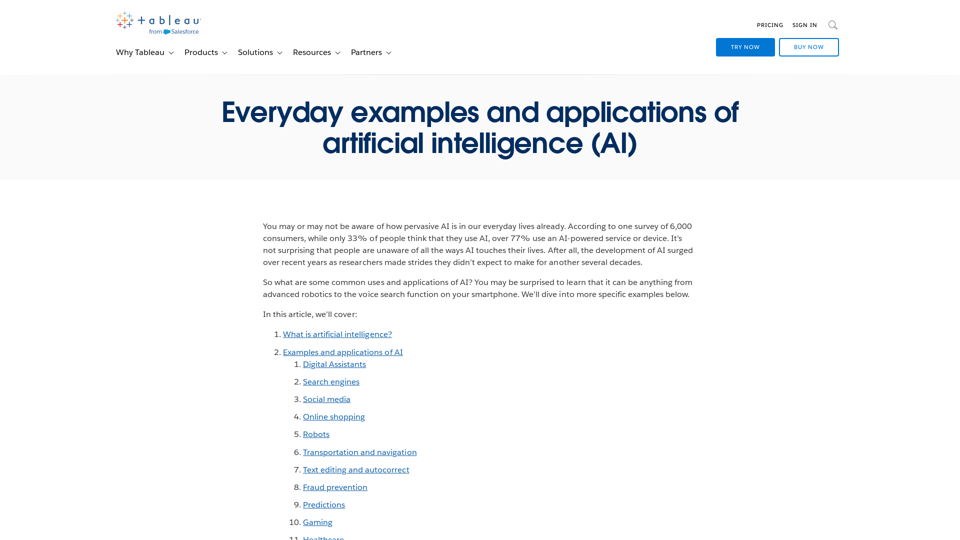Everyday Examples and Applications of Artificial Intelligence (AI)
What is Artificial Intelligence?
Artificial intelligence is a specific branch of computer science concerned with replicating the thought process and decision-making ability of humans through computer algorithms. There are many different branches of AI that can create and do different things. Some types complete simple tasks, while others are much complex. Some AI programs adjust their own algorithms, and some specialized algorithms are so advanced they can beat human experts in their given fields.
Examples and Applications of AI
AI can be almost anything. Your smartphone uses AI, as do services like digital assistants, chatbots, social media websites, and much more. Many home electronics also use AI, such as robot vacuum cleaners or security systems. And, of course, there are classic examples of auto-navigation and robotics.
Digital Assistants
Perhaps the application used by most people would be the digital assistants on our various pieces of technology. If you have a smartphone or laptop, you probably have and use digital assistant software to some degree.
Some of the most popular digital assistants include:
- Siri (Apple)
- Alexa (Amazon)
- Cortana (Microsoft)
- Google Assistant (Google)
- Bixby (Samsung)
Search Engines
Another common application of AI is search engines. Search engine algorithms utilize AI to refine and show better results without the intervention of programmers.
Popular search engines include:
- Yahoo
- Bing
- DuckDuckGo
Social Media
Social media platforms are another common way people interact with AI. All major social media platforms run off AI-powered algorithms which are designed to serve specific purposes.
Popular social media platforms include:
- Facebook (Meta)
- Instagram (Meta)
- YouTube
- TikTok
Online Shopping
This is probably one of the least obvious ways people interact with AI in their daily lives. Many online shopping and ecommerce platforms use AI to streamline their customer experience in a variety of ways.
Robots
The word "robot" probably makes many people think of sci-fi movies like Star Wars or shows like Star Trek with their humanoid, intelligent robots. Though those may seem futuristic or even far-fetched, in reality, many robots already exist in our world.
Transportation and Navigation
You've probably heard of self-driving cars, whether in a sci-fi show or in the news from recent attempts by various companies. But there are more ways that AI is utilized in transportation.
Text Editing and Autocorrect
Another example of AI in the palm of your hand (if you have a smartphone, anyway) is autocorrect and other text editing software.
Fraud Prevention
If you have an account with any major bank, chances are they use AI in their fraud detection and prevention systems.
Predictions
Since AI can process large amounts of data all at once, it's useful in identifying patterns and using those to make predictions.
Gaming
Perhaps surprisingly, AI has been in the field of gaming for years.
Healthcare
From robotics in hospitals and clinics to predictive software used to diagnose rare diseases, AI has many uses in the field of healthcare.
Advertising
Like many of the above examples, AI has numerous applications in the field of advertising.
Analytics
Finally, another common use for AI is in the field of data science and analytics.
Business and AI
While that list of examples may seem extensive, it's certainly not all-encompassing. There are hundreds, if not thousands, of other ways AI touches everyday life for consumers.
For businesses, the application possibilities of AI may seem overwhelming. But it's important to consider how to adopt AI to grow your business, or risk being left behind as the technology evolves.
